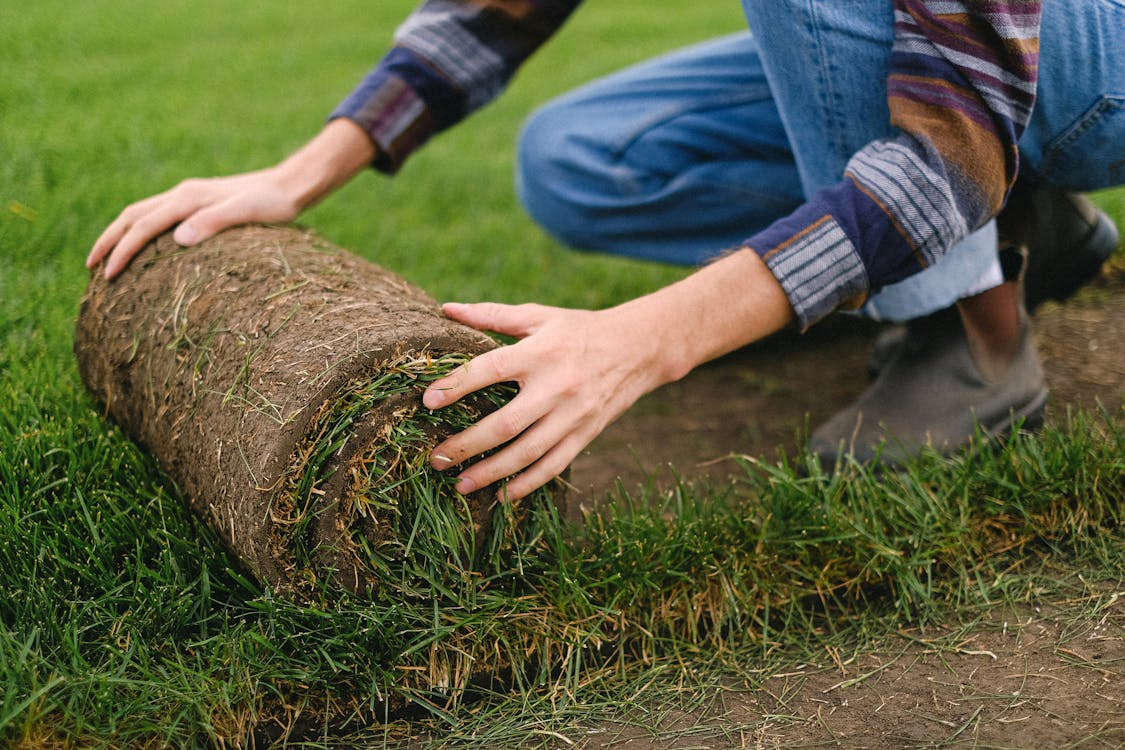A lush lawn starts long before the sod arrives. Success depends on clean prep, smart timing, and steady care. Many problems come from rushing steps or copying a neighbor’s routine. Yards have different soil, shade, and traffic. Your plan should fit your site. Here are common sodding mistakes.
1. Skipping soil prep
Sod is only as good as the base below it. Poor soil blocks roots and holds water in the wrong places. Start by removing debris and old thatch. Till or loosen compacted areas to a depth of four to six inches. You should also blend in compost to lift organic matter, and target a pH near neutral. A simple soil test kit gives you clear numbers to act on. Good prep saves you months of frustration.
2. Poor grading and drainage
Water must move away from the house and off the lawn evenly. Low spots collect puddles that starve roots of oxygen. High spots dry out and turn brown first. Aim for about a two percent slope away from structures, and use string lines to verify. Before you break ground, get a quote for sod installation services to confirm site prep and costs. A professional can spot grade issues you might miss.
3. Laying sod on dry or uneven soil
Dry soil steals moisture from new roots. Bumpy ground creates air gaps that kill contact. Lightly water and rake smooth just before laying each run. You should stagger seams like brickwork for strength and a tight look. Pull pieces tight to the edges, and avoid stretching. Additionally, use a roller after installation to press roots into the soil. Be sure to also fill hairline seams with screened topsoil, not leftover scraps.
4. Watering by guesswork
New sod requires steady moisture, not swamps. Many people overwater out of fear, which invites disease and shallow roots. Water right after installation until the soil is wet three to four inches deep.
For the first week, keep the surface damp with short, frequent sessions. In week two, lengthen sessions and reduce frequency. By week three, switch to deeper, less frequent watering. Be sure to adjust for heat, wind, and soil type.
5. Ignoring timing and traffic
Sod needs a calm window to knit in. Extreme heat or deep cold slows rooting. Plan installation in spring or early fall when possible. Keep kids, pets, and mowers off the lawn for the first two weeks, and use boards to cross areas when you must. In addition, hold fertilizer until you see new growth. A light starter blend with balanced nutrients works best once roots take hold.
6. Skipping maintenance that locks gains in
Mow when the grass reaches about one-third above your target height. Use sharp blades and small cuts. Be sure to feed based on soil needs, not a random schedule. Spot treat weeds before they spread. Additionally, watch for fungus after long wet spells. Small, quick fixes keep the whole lawn healthy, and consistency beats hero work later.
Endnote
Great sod work looks easy because the planning happened first. Prepare the soil, set the grade, and time delivery with care. Install cleanly and water with purpose. Do these few things, and your new lawn will settle fast, grow even, and stay that way.

